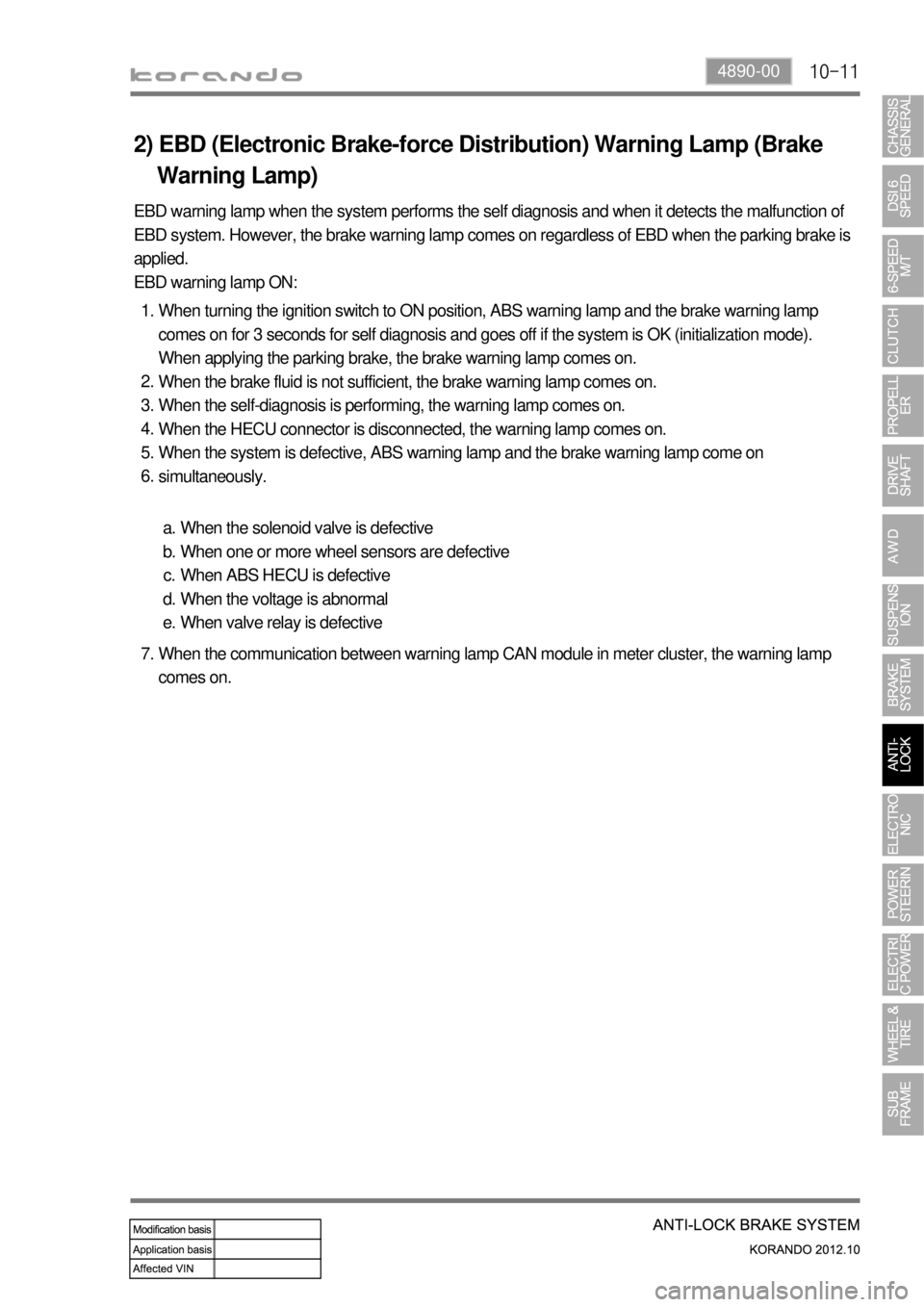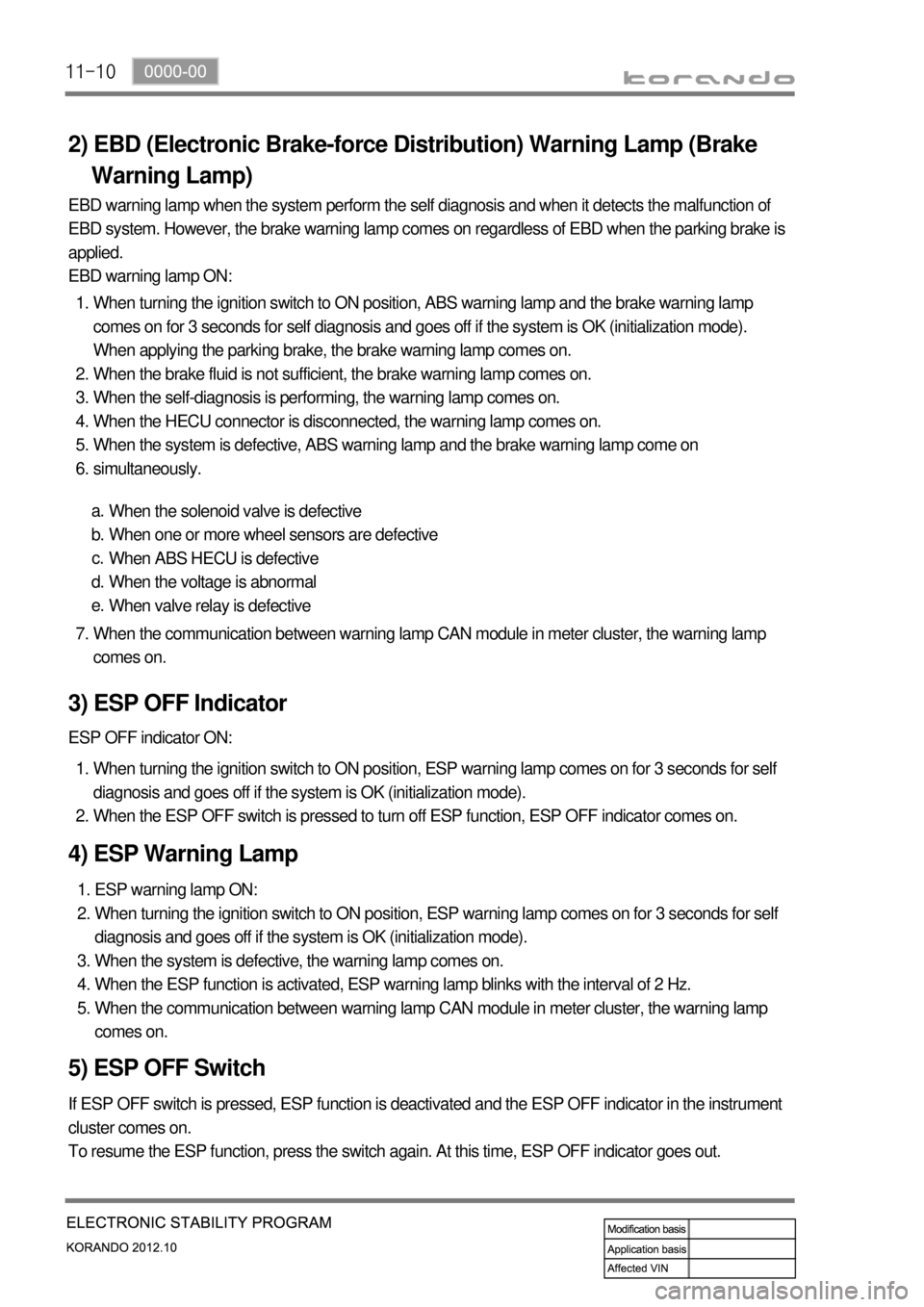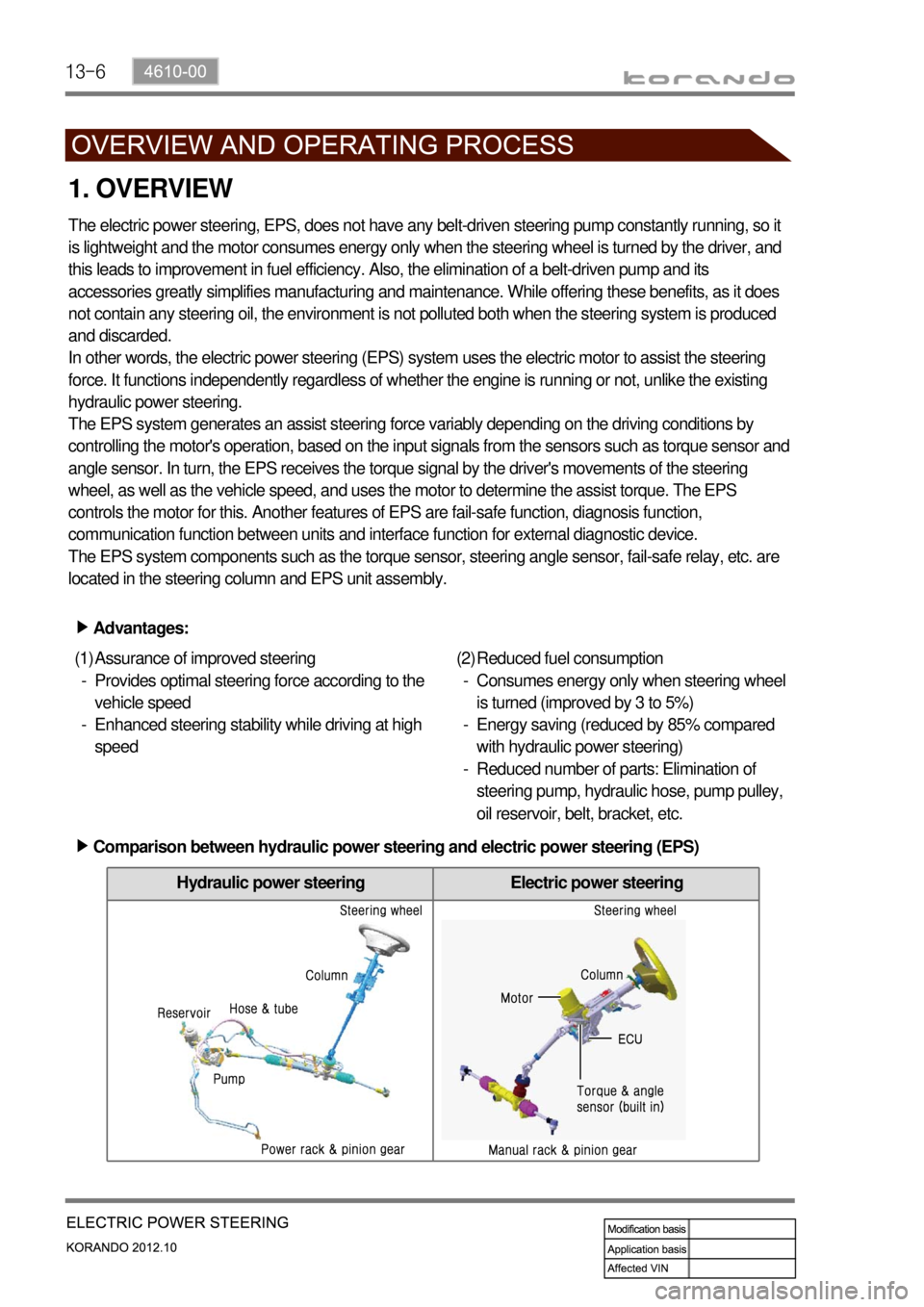relay SSANGYONG KORANDO 2012 Workshop Manual
[x] Cancel search | Manufacturer: SSANGYONG, Model Year: 2012, Model line: KORANDO, Model: SSANGYONG KORANDO 2012Pages: 1082, PDF Size: 96.1 MB
Page 779 of 1082

08-137810-00
(1) Wiper mist
When the multifunction switch is pushed to the MIST position for 0.1 sec. or more with the IGN1 ON,
the wiper relay is turned on after 0.1 sec. has passed. When the wiper returns to the park position, the
wiper relay is turned off.
When the MIST switch signal is input the wiper is operated at high speed. When the switch is release
from the MIST position, the wiper is operated at low speed. 1.
2.
Page 780 of 1082

08-14
(2) Wiper LO/HI control
The wiper LOW relay is turned on when the multifunction wiper switch is at the LO position. The wiper
HIGH relay is turned on when the wiper switch is at the HI position. When the wiper switch is at the HI
position, both the LOW relay (constant operation) and HIGH relay are operated.
The wiper motor returns to parking position and stops, even when turning off the ignition switch during
wiper operation.
The wiper relay should stay ON in low/high wiper operation mode even if the parking signal for the
wiper motor is not received. In INT/AUTO wiper operation mode, the wiper relay should be turned
OFF after 5 seconds if there is no parking signal for the wiper for 3 seconds and informs the driver of
parking position signal abnormality.
While the wiper operates at low/high speed, the front/rear washer switch can be operated but the auto
washer switch cannot.
The wiper motor returns to parking position and stops when turning off the ignition switch during wiper
operation in high mode. 1.
2.
3.
4.
5.
Page 781 of 1082

08-157810-00
When holding the front washer switch at ON position for more than 0.6 seconds with IGN ON, the
wiper relay is activated 0.5 seconds after. The wiper stops after three more wipes since that the
washer switch is turned to "OFF" position. 1.
2) Windshield Washer Control Function
(1) Windshield washer coupled wiper
Wiper and Washer Coupled Operation
Pull the switch briefly (for less than 0.6 sec.)
: One wiping cycle
Pull and hold the switch for more than 0.6 sec.
: Three wiping cycles with washer fluid spray
<0b1d0b1d0b1d0b1d0b1d0b1d0b1d0b1d00470047004700470047004700470047004700470047004700470047004700470047004700470047004700470047004700470047004700470047004700470047004700470047004700470047004700470047004700
47004700470047004700470047004700470047>
Page 782 of 1082

08-16
When holding the front washer switch at ON position for 0.1 to 0.59 seconds during the wiper
operation by the intermittent/automatic wiper switch, the wiper will operate only once. When holding
the washer switch for more than 0.6 seconds, the wiper relay is activated 0.5 seconds after. The
wiper stops after three more wipes since that the washer switch is turned to "OFF" position. 2.
Page 789 of 1082

08-237810-00
When the washer switch signal is received during intermittent operation coupled with rain sensor
with IGN ON and intermittent/automatic
washer switch operation, the wipers operate in washer coupled mode regardless of the
communication with the rain sensor. However, if the washer switch
signal is received the washer relay is activated and wiper relay remains activated,
when the data coupled with rain sensor indicates continuous wiper operation.
Even though the wiping system is in washer coupled wiper mode, the operating data are sent to
rain sensor. 1.
2.
(3) Washer coupled wiper operation during rain sensor coupled operation
Page 942 of 1082

10-114890-00
2) EBD (Electronic Brake-force Distribution) Warning Lamp (Brake
Warning Lamp)
EBD warning lamp when the system performs the self diagnosis and when it detects the malfunction of
EBD system. However, the brake warning lamp comes on regardless of EBD when the parking brake is
applied.
EBD warning lamp ON:
When turning the ignition switch to ON position, ABS warning lamp and the brake warning lamp
comes on for 3 seconds for self diagnosis and goes off if the system is OK (initialization mode).
When applying the parking brake, the brake warning lamp comes on.
When the brake fluid is not sufficient, the brake warning lamp comes on.
When the self-diagnosis is performing, the warning lamp comes on.
When the HECU connector is disconnected, the warning lamp comes on.
When the system is defective, ABS warning lamp and the brake warning lamp come on
simultaneously. 1.
2.
3.
4.
5.
6.
When the solenoid valve is defective
When one or more wheel sensors are defective
When ABS HECU is defective
When the voltage is abnormal
When valve relay is defective a.
b.
c.
d.
e.
When the communication between warning lamp CAN module in meter cluster, the warning lamp
comes on. 7.
Page 962 of 1082

11-10
2) EBD (Electronic Brake-force Distribution) Warning Lamp (Brake
Warning Lamp)
EBD warning lamp when the system perform the self diagnosis and when it detects the malfunction of
EBD system. However, the brake warning lamp comes on regardless of EBD when the parking brake is
applied.
EBD warning lamp ON:
When turning the ignition switch to ON position, ABS warning lamp and the brake warning lamp
comes on for 3 seconds for self diagnosis and goes off if the system is OK (initialization mode).
When applying the parking brake, the brake warning lamp comes on.
When the brake fluid is not sufficient, the brake warning lamp comes on.
When the self-diagnosis is performing, the warning lamp comes on.
When the HECU connector is disconnected, the warning lamp comes on.
When the system is defective, ABS warning lamp and the brake warning lamp come on
simultaneously. 1.
2.
3.
4.
5.
6.
When the solenoid valve is defective
When one or more wheel sensors are defective
When ABS HECU is defective
When the voltage is abnormal
When valve relay is defective a.
b.
c.
d.
e.
When the communication between warning lamp CAN module in meter cluster, the warning lamp
comes on. 7.
3) ESP OFF Indicator
ESP OFF indicator ON:
When turning the ignition switch to ON position, ESP warning lamp comes on for 3 seconds for self
diagnosis and goes off if the system is OK (initialization mode).
When the ESP OFF switch is pressed to turn off ESP function, ESP OFF indicator comes on. 1.
2.
4) ESP Warning Lamp
ESP warning lamp ON:
When turning the ignition switch to ON position, ESP warning lamp comes on for 3 seconds for self
diagnosis and goes off if the system is OK (initialization mode).
When the system is defective, the warning lamp comes on.
When the ESP function is activated, ESP warning lamp blinks with the interval of 2 Hz.
When the communication between warning lamp CAN module in meter cluster, the warning lamp
comes on. 1.
2.
3.
4.
5.
5) ESP OFF Switch
If ESP OFF switch is pressed, ESP function is deactivated and the ESP OFF indicator in the instrument
cluster comes on.
To resume the ESP function, press the switch again. At this time, ESP OFF indicator goes out.
Page 989 of 1082

13-6
Hydraulic power steering Electric power steering
1. OVERVIEW
The electric power steering, EPS, does not have any belt-driven steering pump constantly running, so it
is lightweight and the motor consumes energy only when the steering wheel is turned by the driver, and
this leads to improvement in fuel efficiency. Also, the elimination of a belt-driven pump and its
accessories greatly simplifies manufacturing and maintenance. While offering these benefits, as it does
not contain any steering oil, the environment is not polluted both when the steering system is produced
and discarded.
In other words, the electric power steering (EPS) system uses the electric motor to assist the steering
force. It functions independently regardless of whether the engine is running or not, unlike the existing
hydraulic power steering.
The EPS system generates an assist steering force variably depending on the driving conditions by
controlling the motor's operation, based on the input signals from the sensors such as torque sensor and
angle sensor. In turn, the EPS receives the torque signal by the driver's movements of the steering
wheel, as well as the vehicle speed, and uses the motor to determine the assist torque. The EPS
controls the motor for this. Another features of EPS are fail-safe function, diagnosis function,
communication function between units and interface function for external diagnostic device.
The EPS system components such as the torque sensor, steering angle sensor, fail-safe relay, etc. are
located in the steering column and EPS unit assembly.
Advantages: ▶
Assurance of improved steering
Provides optimal steering force according to the
vehicle speed
Enhanced steering stability while driving at high
speed (1)
-
-Reduced fuel consumption
Consumes energy only when steering wheel
is turned (improved by 3 to 5%)
Energy saving (reduced by 85% compared
with hydraulic power steering)
Reduced number of parts: Elimination of
steering pump, hydraulic hose, pump pulley,
oil reservoir, belt, bracket, etc. (2)
-
-
-
Comparison between hydraulic power steering and electric power steering (EPS) ▶